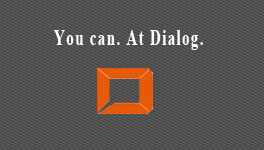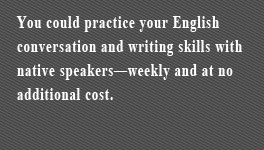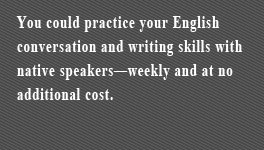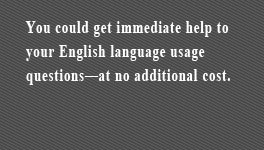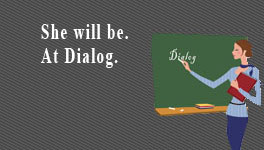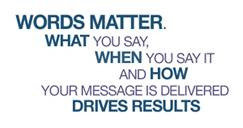Letters of Note: the Website That Revived the Fine Art of Correspondence
The Guardian October 15, 2013
In our age of email and texts, letter-writing seems set for extinction. But millions have been flocking to a website to pore over the correspondence collected by blogger Shaun Usher.
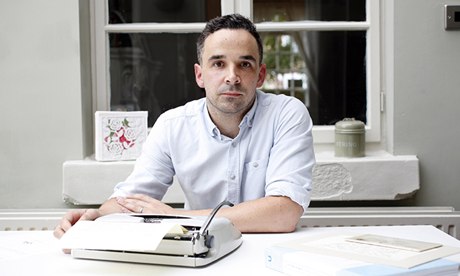
Shaun Usher, the blogger behind Letters of Note, the website devoted to correspondence 'deserving of a wider audience'.
After four years of collecting the letters of the famous and the brilliant, Shaun Usher decided to sit down and write one of his own. He dug out an old typewriter, hunted down some age-stained sheets of A4 and started to clatter away. Two days later, beside a wastebasket of rejected paper, he was finally satisfied. "It was such a headache to do it without mistakes and get it to look as I wanted," he recalls. "I can't imagine how difficult it must have been when people used to write letters like that every single day."
Usher's missive is an introduction to readers of his new book Letters of Note. Many of them will already be familiar with the concept: since 2009, he has been featuring "correspondence deserving of a wider audience" on his much-loved website lettersofnote.com. The site receives more than 1.5m visits every week and he has a six-figure following on Twitter - fans include Stephen Fry, Caitlin Moran and Nick Hornby. The book is released by Unbound - the Kickstarter of the publishing industry - and it is already the most successful title in the crowd-funding website's short history, raising 255% of its target donations.
Open the pages of the anthology and the appeal is immediately obvious. Letter writing, as Usher himself found, is finicky and tedious; and he didn't even have to find a stamp (60p for first class!) and schlep to the nearest postbox. But receiving one - or even reading someone else's - is often a rare and soaring delight. In an age of email and text messages, even more so.
"If I'm reading an email I've always got my eye on something else," says Usher. "But if a letter comes through the door, I'm always in awe that someone has taken the time and made the effort. There's something beautiful just looking at the paper someone's chosen, looking at the letterhead if there is one, working out what they have typed the letter on or looking at the handwriting. There's just so much more to enjoy."
-
Offers a collection of one hundred and twenty five of the world's most entertaining, inspiring and unusual letters, based on the seismically popular website of the same name - an online museum of correspondence visited by over 70 million people.
Letters of Note contains 125 examples that range from a clay tablet in the 14th century BC to almost the present day. The authors usually need little introduction - Mick Jagger, Dorothy Parker, Ernest Hemingway, Katharine Hepburn and Leonardo da Vinci among them - but the sentiments they express might cause you to look at them in a different way. "A legitimate form of snooping" is how Usher explains the appeal of Letters of Note.
The surprises start with the first letter, a handwritten note from the Queen to US president Dwight D Eisenhower in 1960. In relaxed, unstuffy script, she begins: "Seeing a picture of you in today's newspaper standing in front of a barbecue grilling quail reminded me that I had never sent you the recipe of the drop scones which I promised you at Balmoral."
Even more revealing is the tender response that Iggy Pop sent in 1995 to a 21-year-old fan who had written to him detailing difficulties she had been having at home. The musician printed his home address on the sleeve of one of his records and he turns out to be an assiduous, thoughtful correspondent. "I didn't think he was an awful person, but I never would have expected that from him," says Usher, who received the letter direct from the recipient, Laurence. "I can't believe he gave out his address in the first place and I can't believe that he replied to this girl and I can't believe that he showed such a soft side to himself. But I've never seen a bad letter written by Iggy Pop and I've seen quite a few."
Other letters are more purely entertaining. Groucho Marx kept up a sporadic exchange with Woody Allen throughout the 1960s and appears to have delighted in showing off to the comic writer almost a half-century his junior.
Usher's "favourite letter ever" comes from a lesser-known author, Robert Pirosh. In 1934, wanting to leave his job as a New York advertising copywriter and become a Hollywood screenwriter, Pirosh sent out perhaps the most sparse, tantalising job application in history. (Usher perhaps sees some personal parallels here: he was a copywriter before starting Letters of Note; the idea for the website came when he was researching a brief for a stationery client.)
As poignant and entertaining as Letters of Note is, it is hard not to read the book without a pang of mourning for a dying art. The popularity of Usher's site is one indication of our fascination - Simon Garfield has written a wonderfully elegant history, To the Letter, also published this month (Canongate £16.99) - but what correspondence will we leave behind for future generations?
It's impossible to predict - most collections of letters are only unearthed many decades after they were originally composed - but Usher is not entirely despondent. Even though email is not always the most evocative or emotional medium, it can throw up some diverting snapshots: he cites Miranda July's recent project We Think Alone, where the performance artist solicited 20 personal emails over 20 weeks from a diverse group including writer-performer Lena Dunham, actor Kirsten Dunst and the former basketball player Kareem Abdul-Jabbar. You simply had to sign up and the results were sent to your inbox each Monday.
Garfield, meanwhile, speaks to archivists at the Harry Ransom centre at the University of Texas, which is currently trying to convince writers and artists to part with their "born digital" material - in other words, their emails and computer documents - in return for a fee. So far they have encountered some reluctance but there is a precedent here: in 2010, Salman Rushdie sold the contents of an old computer and even the machine itself, a Macintosh Performa 5400, to Emory University in Atlanta.
Traditional letter writing will always appeal to a small crew of luddites: typewriter obsessive Paul Auster began corresponding with fellow author JM Coetzee in 2008 in an attempt to "strike sparks off each other"; their lively exchange Here and Now was published earlier this year. Other notable exceptions are the writers and animators at Pixar - the creators of computer-animated films Toy Story and Finding Nemo - who appear to reply by letter to every piece of fan mail and typically doodle all over the pages, too.
- "It's great to shine a light on the subject and I really wish it would cause a huge resurgence," says Usher. "But you can't really fight the advance of technology and I'm as bad as the next person. I will be teaching my kids to write letters but we'll see whether that happens. My son's already addicted to the iPad, he's only three and he can't write, so I don't know how that's going to work. But I will definitely try."
Do you have a treasured letter from a well-known figure, dear friend or family member? Perhaps a letter that you've kept since childhood? Something from an ancestor? Share it with us with a few lines on why it's so precious to you, and Shaun Usher will select his favourites to publish on the Guardian site.
Here's how to get involved:
- We'd like you to take a photograph of your letter and submit it by clicking on one of the blue 'Contribute' buttons, then upload it to 'picture'.
- If you think the letter's difficult to read, then please transcribe it, or just an excerpt, if it's very long, in the description box.
- GuardianWitness is the home of user-generated content on the Guardian. Contribute your video, pictures and stories, and browse news, reviews and creations submitted by others. Posts will be reviewed prior to publication on GuardianWitness, and the best pieces will feature on the Guardian site.
Closes 23:59 on 26 October 2013.



